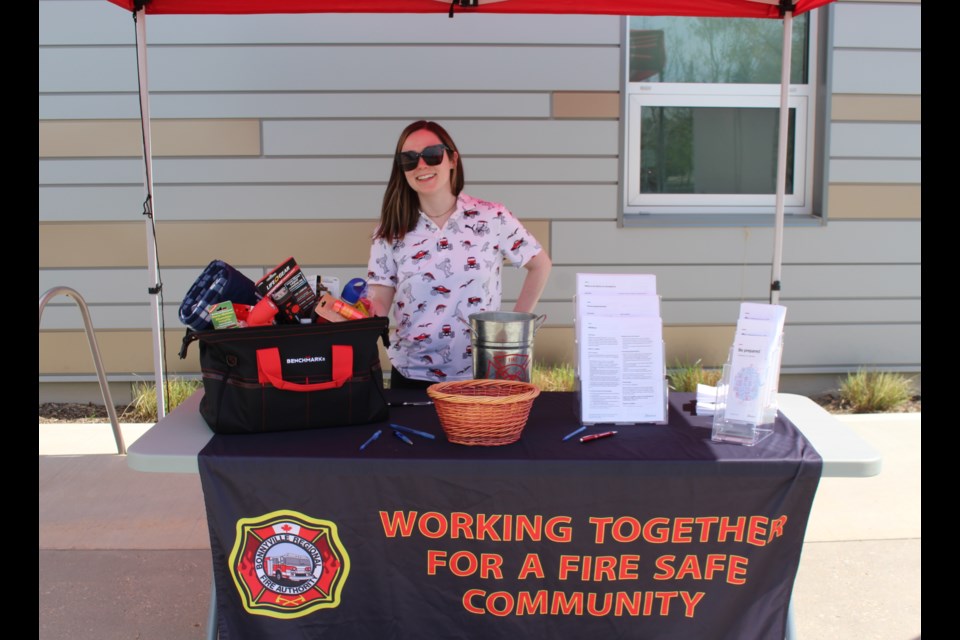LAKELAND – This year’s Emergency Preparedness Week has extra significance for Alberta residents as the province remains under a provincial state of emergency sparked by dozens of wildfires burning out of control.
A recent evacuation of homes on Cold Lake First Nations earlier this month is a stark reminder that when emergencies strike, they often come with little warning.
“One of the biggest messages that I hope that people take away from Emergency Preparedness Week and then carry it into the rest of their lives, is that all levels of government expect individuals to be able to self-sustain for 72 hours in the case of a major emergency,” said Regional Fire Chief Dan Heney with the Bonnyville Regional Fire Authority (BRFA).
The wildfire experienced in Cold Lake on May 4 was disruptive to those it directly impacted, but it paled in comparison to fires that caused a mandatory evacuation of residences, hospitals and whole communities in northwestern Alberta, including Drayton Valley and Brazeau County.
As of May 14, roughly 19,300 Albertans remained under an evacuation order. The number of evacuees has decreased from earlier in the month after some communities were given the all-clear to return home.
With hot, dry conditions expected to continue in most areas of the province, the Canadian Armed Forces are deploying to assist firefighting operations, the Alberta government announced on Thursday in a wildfire update.
The question posed by Emergency Preparedness Week is: “Are you prepared in case of an emergency?”
“The number one thing that people should have prepared is a plan,” said Heney. "They should have already sat down as a family, as a group, and talked about, ‘If this happens, what's our plan’.”
Information on how to be prepared in case of an emergency and what should be included in a 72-hour emergency kit is outlined on the federal government's website www.getprepared.gc.c and at www.alberta.ca under emergency preparedness.
"Things like a windup flashlight, some candles, a manual can opener, possibly some canned or dried food, water – there's a whole bunch of things that need to go into that kit,” listed Heney.
In situations where someone must rely on their emergency kit, Heney says they may not thrive, but the purpose is they can survive.
“In the case of a widespread emergency, the emergency responders are going to be absolutely engulfed in what they're doing. It could take a while to get to individual people,” he said. “That is ultimately the reason why FCSS is one of the big partners in [Emergency Preparedness Week], they are the other half of emergency management.”
While emergency crews work to address immediate dangers, emergency social services like Family and Community Support Services mobilize to assess and support the needs of residents left in the aftermath of an emergency.
“There are first responders and then there are the people that backup the first responders... They are the ones that are working the reception centres, they are the ones that are that are bringing in the donated food and setting up the camp cots.”
‘Be Prepared. Know Your Risks.’
Everybody has a personal responsibility to be ready, says Heney. That is why this year’s national theme for Emergency Preparedness Week is “Be Prepared. Know Your Risks.”
Whether your area is known for flooding, wildfires, freezing rain, earthquakes or tornadoes, it is important that people know the common risks of where they live and be prepared for them.
Risks can also extend beyond natural disasters. Heney says people should consider what is around them, are they close to train tracks or chemical-based industries.
“Understand the risks around you, make sure that you are really dialed into the types of things that you should be prepared for. Mitigate those problems before they ever happen,” said the regional fire chief.
When people are not prepared or are in a state of panic in an emergency, the risks of accident or poor decision-making increase, which can result in greater problems for emergency responders.
“When you're planning and thinking ahead, you just ‘do’ rather than respond with ‘flight, fight or freeze,’ that kicks in when the adrenaline hits,” acknowledged Heney. “The hope is that people who have prepared ahead of time can stay calmer and can they make good decisions.”
The best thing to do is have a plan, be prepared, follow emergency instructions, and know that first responders will provide updates as soon as they are able, added Heney.
Emergency plans should include any pets or livestock that may need to be evacuated or supported over a 72-hour period.
“It’s really easy to talk about and easy to say, but you actually have to follow up and do it,” said the fire chief.
Emergency kit checklist
-
Food and water
-
Clothing and bedding
-
Fuel, lights and fire source
-
Electronic chargers
-
Personal supplies and medication
-
Documents and identification
-
Distraction and comfort items



